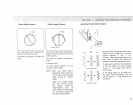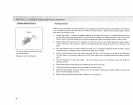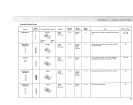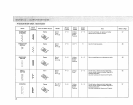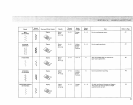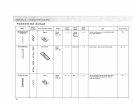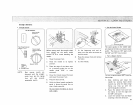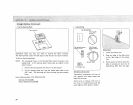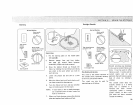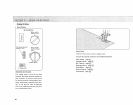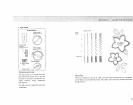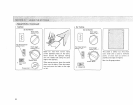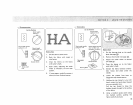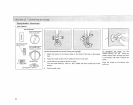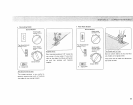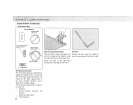
Darning
StraightStretch
Top thread
tansloR
control
2 to6
No presser
toot
S_t the Machine
Stitch w_dth
control 0
] 2 3 4
Darning plate
Stitch length
control any number
(not necessary to
adjust)
2
Stretch Stitch
Here's How
1. Put the darning plate on the needle plate
(see page 2__88).
2. Remove presser foot and foot holder
(see page 1__00),stretch fabric between
embroidery hoops with hole centered.
3. Draw the bobbin thread up through the
fabric by holding the top thread and taking
one stitch at the spot where you wish to
start darning.
4. Lower the presser bar and sew at a slow
speed.
5. Move the fabric back and forth slowly until
you have covered the darning area.
6_ Turn the fabric half turn and sew antother
layer of stttching over the first layer.
NOTE: |f your fabric is thin or badly damaged,
use a separate piece of fabric under the
hote to reinforce it.
7. When you finish darning, remove the darning
plate and reptace foot holder and foot.
Set the Machine
Stitch width
control 0
/234
Top thread tension
control 2 to 6
H: Straight foot
Stitch length
control yellow
stretch stitch
position
2
Stretch Stitch
The Stitch and Its Uses
This stitch is the stretch variation of
the straight stitch, especially develop-
ed for knits and stretch fabrics.
This stitch can also be used for
topstitching on all fabrics.
Stretch stitching was developed
to be used on stretch fabrics and
knits, It can be used on other
fabrics as well. It works well on
curved seams and on any
garments that will receive a great
deal of strain {ie. children's
cloth es)o
The stretch stitch does not
actually stretch as it is being
sewn, but ts stitched in a
forward and back motion
(sometimes called a "reverse-
action" stitch}, so that it will
give when the fabric stretches
instead of breaking,
29



